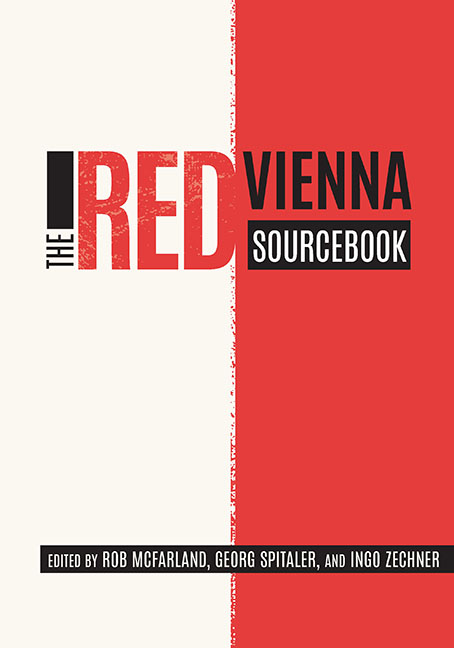Book contents
- Frontmatter
- Contents
- Acknowledgments
- Permissions and Credits
- A Note on the Structure of This Book
- Introduction
- Part I Foundations
- Part II Philosophies
- Part III Identities
- Part IV New Values
- Part V Social Engineering
- Part VI Vitality
- Part VII Housing
- Part VIII Cultural Politics
- Part IX Mass Media
- Part X Exchange
- Part XI Reaction
- Part XII Power
- Chronology
- References
- Contributors
- Index of Subjects
- Index of Persons
Chapter 6 - Austro-Marxism
Published online by Cambridge University Press: 23 October 2020
- Frontmatter
- Contents
- Acknowledgments
- Permissions and Credits
- A Note on the Structure of This Book
- Introduction
- Part I Foundations
- Part II Philosophies
- Part III Identities
- Part IV New Values
- Part V Social Engineering
- Part VI Vitality
- Part VII Housing
- Part VIII Cultural Politics
- Part IX Mass Media
- Part X Exchange
- Part XI Reaction
- Part XII Power
- Chronology
- References
- Contributors
- Index of Subjects
- Index of Persons
Summary
WHAT IS AUSTRO-MARXISM? On November 3, 1927, none other than Otto Bauer, the acting chairman and leading theoretical strategist of the Social Democratic Workers’ Party (Sozialdemokratische Arbeiterpartei, SDAP), took the opportunity to opine on that question. In an anonymous headline article in the Arbeiter-Zeitung, Bauer distinguishes between three competing definitions of the term: On the one hand, Austro-Marxism had become, “for quite some time, a favorite catchphrase in the parlance of the bourgeoisie” and carried the connotation of “an especially pernicious variety of socialism.” On the other hand, this bourgeois usage of the term contradicts its true history, which was coined before World War I by the American socialist Louis B. Boudin. He used the term to refer to a group of young Austrian Social Democrats (including Max Adler, Karl Renner, Rudolf Hilferding, and Otto Bauer) who were attempting “to adapt the Marxist historical approach to complicated phenomena in a way that mocked all superficial, schematic approaches to Marxism.” Following the dissolution of the Austro-Marxist school after World War I, however, the term meant “nothing more than the ideology of the unity of the workers’ movement.” As opposed to the “workers’ parties of most other countries,” the Austrian Social Democrats had succeeded in “maintaining their unity in spite of the pressures of the postwar era,” meaning that they were able to withstand the influence of communist agitation. All of this was possible because of a political strategy that “unified prosaic realpolitik and revolutionary enthusiasm in one movement.” In Bauer's time, Austro-Marxism was both a product of the unity of the Austrian workers’ movement as well as “the spiritual force that preserves that unity.”
It is hard to define this vibrant concept more concisely than Bauer does it here, especially since his definition identifies the major points of contention that underlie the contemporary understanding of the term. One point of contention is the relationship to political opponents who, despite all evidence to the contrary, misunderstood Austro- Marxism to be the harbinger of an antidemocratic coup d’état, a dictatorship of the proletariat. Another point of contention is the Austro-Marxist approach to Marxism as a scientific method, used by the leading protagonists of the movement for the purpose of systematically expanding empirical social sciences as well as adapting them to political, social, or economic phenomena which had, up to that point, been poorly understood or completely ignored.
- Type
- Chapter
- Information
- The Red Vienna Sourcebook , pp. 113 - 132Publisher: Boydell & BrewerPrint publication year: 2019

